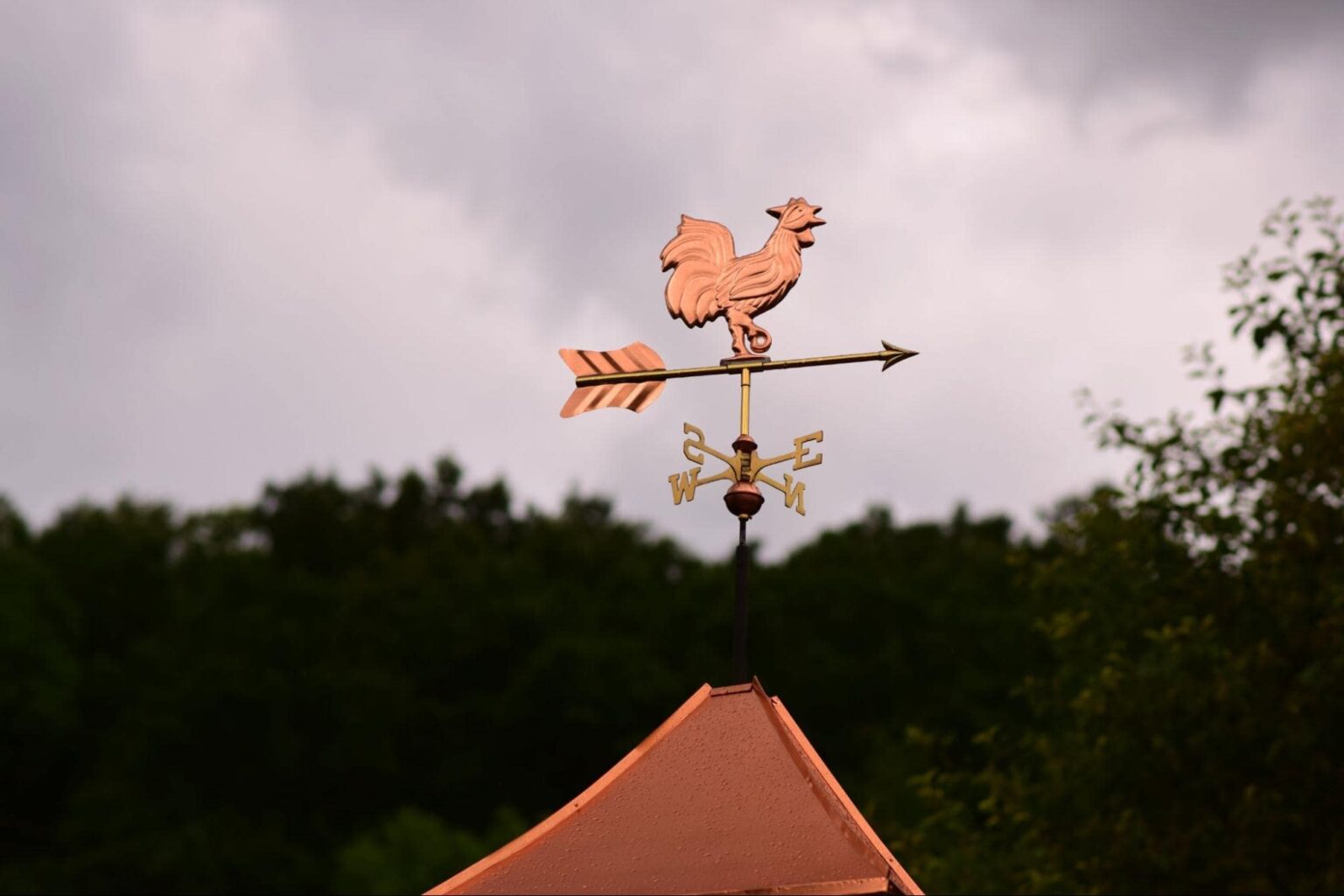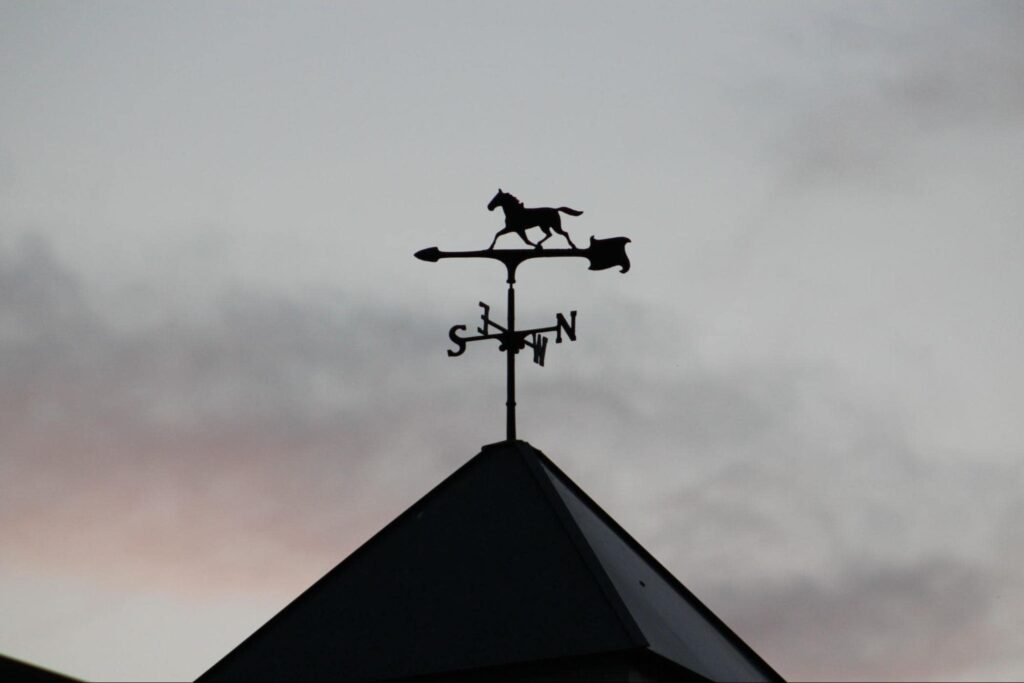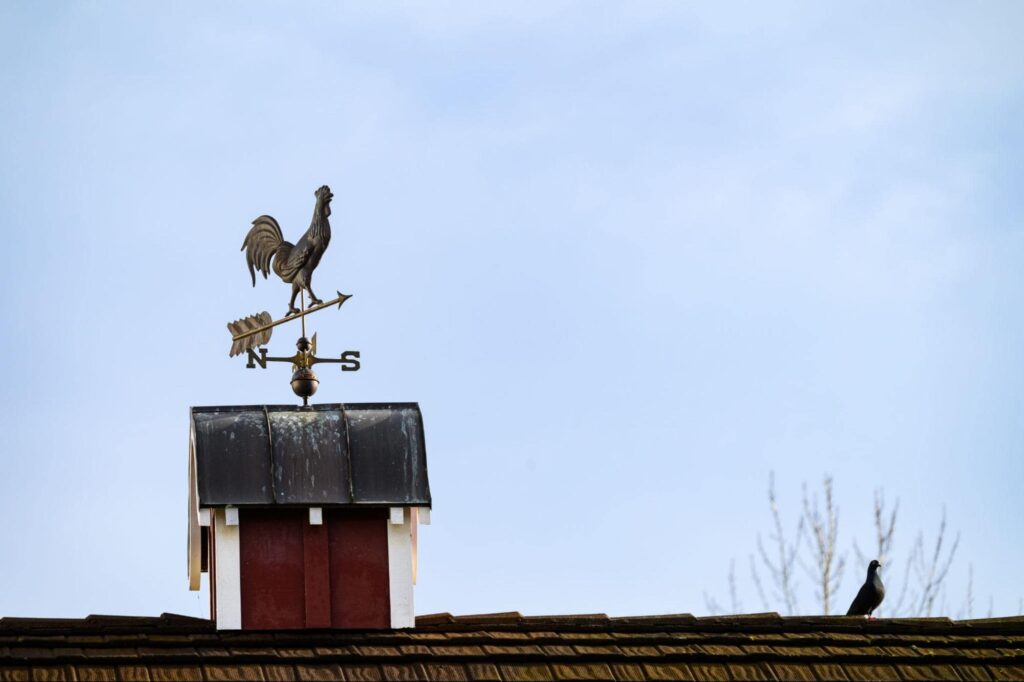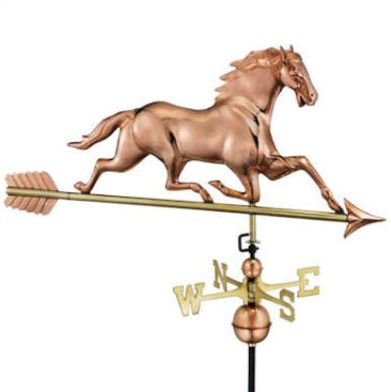
As you’re driving down the back roads, you may notice taller barns and sheds have weathervanes sitting on top of them. Now more than ever, we see them as decorative pieces. But throughout history and even today, they can be a useful tool for determining the weather and wind patterns.
Continue reading to get an in-depth look into weathervane history. You might even be surprised by some of the new information!
Where Does the Word Weathervane Originate?
The weathervane definition is “a revolving pointer to show the direction of the wind, typically mounted on top of a building”. To dive deeper into the word, the second half “vane” comes from the Old English word “fana” which translates to flag or banner. This has since inspired flags to be a common weathervane ornament.
Let’s Start From the Beginning: Where Did Weathervanes Come From?
In order to start at the beginning, our weathervane history timeline begins around 48 B.C. Andronicus was a Greek astronomer who created the first weathervane. The original design was a bronze structure to look like the Greek God Triton, the ruler of the sea.
The first weathervane was believed to be up to 8 feet long and sat on top of an 8-sided building, the Tower of the Winds, which represented the 8 Greek winds. In ancient history, the winds were known to have divine power so weathervanes became an integral part of society’s life.
Throughout history, societies have used wind vanes and weathervanes to decorate the top of their temples and churches, which usually depicted their gods. As we said, the gods were known to control the winds and societies wanted to make sure they were honoring them to ensure they have favorable weather.
Other ways weathervanes were used were for navigating the seas. Viking ships used them not only as a status symbol but also to help them find their way. Even today, Norwegian and Swedish ships still use weathervanes to direct their travels.
What Does a Weathervane Do?
Even with the evolution of the methodology of the weathervane, the purpose has stayed the same. A weathervane helps you grasp a better understanding of weather patterns and when incoming storms are rolling in.
Beyond your own use, a weathervane may be used more often than you think. Weather stations use them to help predict storms, as well as use them as indicators for when there’s a higher chance of wildfires.
And as we said before, sailers and ships still regularly use weathervanes to understand ocean currents and as a navigational tool.
Now, you’re likely not traveling the seas or predicting the weather for a news station. So, what does a weathervane do for you?
Farmers can use weathervanes to get insight into the weather and know how to plant their crops for the best harvest possible. If you own a horse barn, knowing when a storm is coming can help you prepare your horses and your barn appropriately.
As weathervanes have served this purpose for hundreds of years, they have started to shift into a more decorative purpose as well. We’ll discuss this later in the blog, but some people decide to decorate their roofs with a weathervane. You can customize the design to represent a specific animal or a prime feature of your property.

Common Weathervane Types
Penn Dutch Structures specializes in classic weathervanes and ours come with a variety of ornaments and sizes. But there are other types of weathervanes that are used in a lot of different places.
- Classic Weathervane. This is the most common weathervane type and has been used for centuries. You will find these on top of buildings and they can be used not only as functional pieces but also as decorative ones.
- Wind Sock. A wind sock usually won’t tell you what direction of the wind in terms of North, East, South, or West but some wind socks will tell you the speed of the wind. These are typically placed on runways or near helipads.
- Digital Weathervane. Another type of common weathervane is a digital one, which is typically used for weather forecasting and stations. This is the most advanced version of a weathervane.
Parts of a Weathervane
When you first see a weathervane, there are a lot of little components that work together to make the tool useful. How do they work together? In this section, we’ll outline each component below.
- Ornament. This large piece of the weathervane is decorative and can represent something specific to your home or barn.
- Arrow. Attached to the ornament will be an arrow, both the ornament and the arrow will move according to the direction of the wind.
- Directions. Your weathervane will have North, South, East, and West on it and these will be fixed on your weathervane rod.
- Globe. There will also be a small globe on the rod, that sits just below the directions. This is just a decorative piece and isn’t used to determine the direction of the wind.
How to Read a Weathervane
Now that all the components of a weathervane are outlined, we’ll highlight how they all work together so you can better understand how to read a weathervane.
The ornament and arrow will be connected to each other and will sit just above the directional points. They point towards a specific directional point which indicates where the wind is coming from. For example, if the arrow is aligned with the “S” it means there is a south wind, and the wind is coming from the south and moving north.

Where to Put a Weathervane
Weathervanes should be placed on the tallest building you own, so you can receive the most accurate information about where the wind is coming from. Typically, a weathervane is accompanied by a decorative cupola which helps increase its height.
At Penn Dutch Structures, we have multiple sizes of weathervanes that can be placed on a variety of buildings. From larger buildings to garages, sheds, and gardens, you’ll be able to find a weathervane for you.
Reasons to Have a Weathervane
Now that you’ve learned a lot about weathervane history, it might be time to get one of your own! Below, we’ll list out a few reasons you may decide to buy a weathervane for your property.
- Understand Weather Patterns. As we’ve stated earlier in the blog, incorporating a weathervane into your roof design can help you have a better understanding of when an upcoming storm is approaching. Ultimately, they can help you better prepare your property and any animals you have so the negative effects of the storm are less severe.
- Add a Personal Touch. With a ton of different design options, you can have a weathervane that represents your home or your property. Choose between farm animals, birds, decorative arrows, or human figures.
- Boost Curb Appeal. Any additions to your landscaping are known to boost your home’s curb appeal. Even if you are just looking for a decorative weathervane, it will help you have a more put-together exterior. And ultimately, this will increase your home’s value in the long run.
With a New Depth of Weathervane History Knowledge
Browse Penn Dutch Structures’ weathervane collection to find one for your own property!

